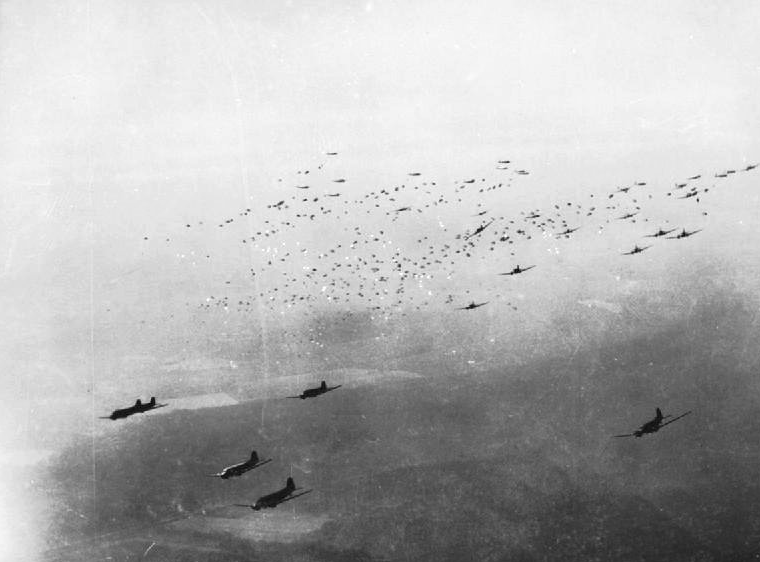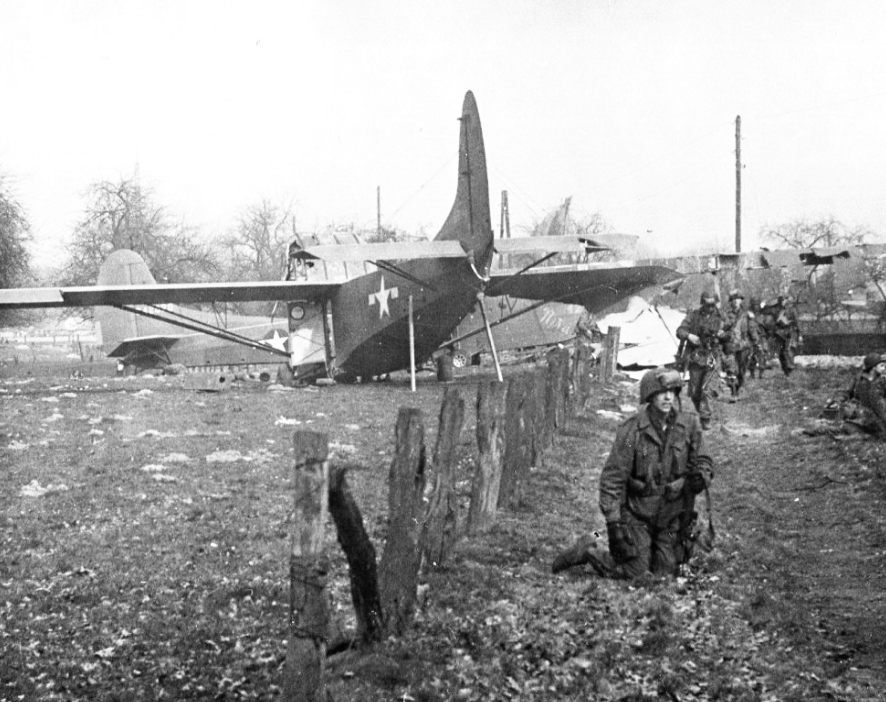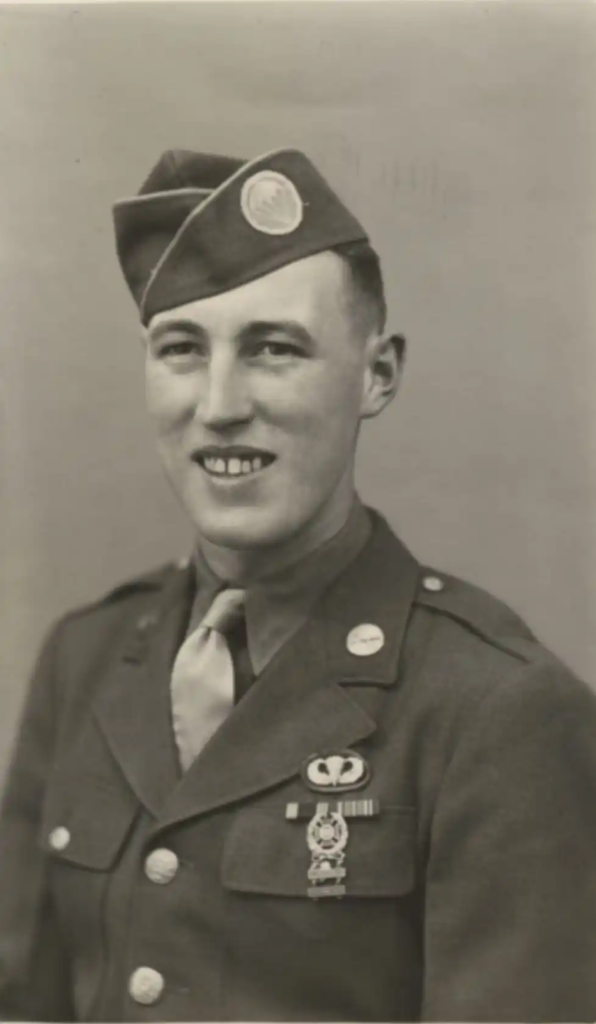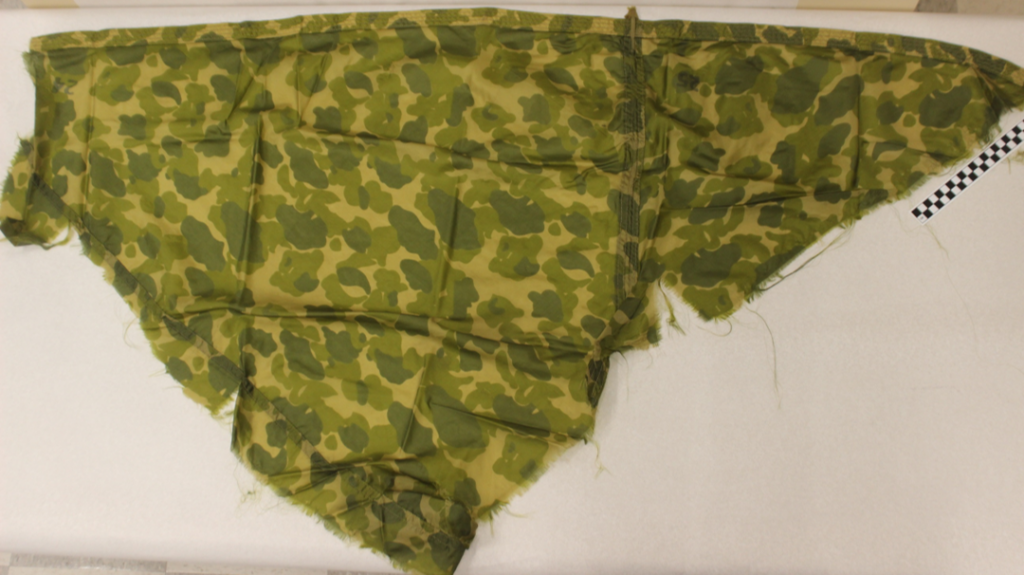Operation Varsity
Early in the morning on March 24, 1945, two Airborne divisions, one American and one British, flew over the Rhine River becoming the largest single-day airborne operation in history.
The Mission
In the final months of WWII, Western Allied Forces advanced east into Germany. This meant crossing numerous rivers, many of which no longer had standing bridges. The Rhine River was especially treacherous, with steep banks and swift currents; however, it was the final barrier keeping Allied forces from the heart of Germany.
To solve this issue, Army General Dwight Eisenhower, the supreme allied commander of the Allied Expeditionary Force, decided the river would be crossed in several places by nearly 17,000 Allied forces under his command. This plan became known as Operation Plunder. An important component of the campaign was the planned insertion of the United States’ 17th Airborne Division and the United Kingdom’s 6th Airborne Division across the Rhine on the east side and behind enemy lines. This sub-operation was named Operation Varsity.
The main goal of this operation was to seize and hold the high ground five miles north of Wesel, Germany, and to facilitate the ground action and establish a bridgehead. The soldiers would then hold the territory until the advancing units of the British 21st Army Group joined them, allowing them to advance to northern Germany. Operation Varsity would involve more than 16,000 paratroopers and several thousand aircraft, making it the largest Airborne operation in history to be conducted on a single day and in one location. It was also the only large-scale Airborne operation conducted on German soil, and the first, and only, combat jump for the 17th Airborne Division.

How It Played Out
On the night of March 23rd, British ground troops crossed the Rhine and launched an intense assault near Wesel, securing several bridgeheads. On March 24th , the Airborne phase kicked off with more than 1,500 American aircraft and gliders carrying more than 9,000 soldiers, and 1,200 British aircraft and gliders carrying 8,000 Soldiers. They met in the sky above Brussels, Belgium. To draw away enemy fighters during the operation, the 15th Air Force, consisting of 150 heavy bombers, bombed Berlin.

Paratroopers jumped to the drop site, while gliders cut loose over the landing area. After capturing their objectives, the paratroopers fought off fierce German counterattacks. Concealed flak positions, sniper and mortar fire caused casualties. In the process, they captured German prisoners.
Over 1,070 members of the 17th Airborne and the 6th British Airborne Divisions were killed and thousands more were wounded.
ASOM Connection
T-5 Main Personnel Parachute Canopy Fragment
Sergeant John J. Hinchliff
Headquarters and Headquarters Company (HHC), 3rd Battalion,
507th Parachute Infantry Regiment (PIR)

Sergeant John J. Hinchliff took part in two major combat jumps with the 507th PIR during World War II:
- Operation NEPTUNE (Normandy, France) – C-47 #42-24201
- Operation VARSITY (Wesel, Germany) – C-47 #43-49090
During the Normandy invasion, the 507th PIR was temporarily attached to the 82nd Airborne Division, replacing the battle-worn 504th PIR. After the campaign concluded, the 507th became part of the newly formed 17th Airborne Division and remained with the unit for the duration of the war.
On 24 March 1945, following his combat jump during Operation VARSITY, Sergeant Hinchliff cut this fragment from his T-5 parachute canopy as a personal memento.

Originally from Park Rapids, Minnesota, Hinchliff had already been serving with the National Guard when the U.S. entered the war. He was called to active duty on 10 February 1941.
Sergeant Hinchliff passed away peacefully at the age of 99 on 17 November 2020.
Did you enjoy this content? If so, please consider giving a gift to the ASOM to help us continue our mission of educating the public on the history of Airborne and Special Operations Soldiers.



